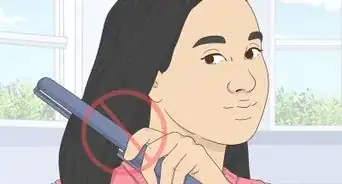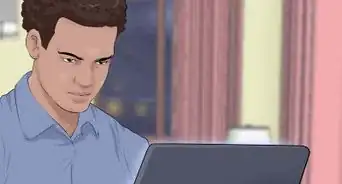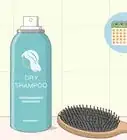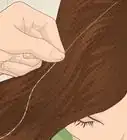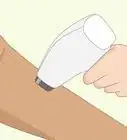X
This article was co-authored by Ashley Adams. Ashley Adams is a Licensed Cosmetologist and Hair Stylist in Illinois. She completed her Cosmetology education at John Amico School of Hair Design in 2016.
This article has been viewed 91,511 times.
Hair yellowing, also called brassiness, can mess with your look and be quite frustrating. If you notice those yellow hairs popping up, start by switching to color-friendly hair products. Don’t be put off by their purple color, this will counteract the yellow tint. Talk with your stylist about dyeing strategies as well. In your everyday life, avoid exposing your hair to UV rays or smoking to keep your hair healthy.
Steps
Method 1
Method 1 of 3:
Styling and Treatments to Counter Yellowing
-
1Rinse your hair with vinegar. Get a large plastic bottle and fill it with 1 gallon (3.8 L) of tap water. Mix 1 tablespoon (15 mL) of apple cider vinegar into the water. Tilt your head over the bathroom sink or tub and rinse your hair with this mixture. Then, take a shower and shampoo and conditioner your hair as you usually do.
- Keep rinsing your hair off in the shower until it no longer smells of vinegar.
- The acidic elements of the vinegar will help to strip your hair of any yellow tints. However, don’t do this treatment more than every other week or your hair will dry out.
-
2Use a color renewing shampoo and conditioner. Look for products that specifically state that they can preserve or save your current hair color. Some shampoos and conditioners are even designed for silver or gray hair in particular and have a purple tint to them. Follow the directions stated on the product exactly, as some are not designed for everyday use.[1]
- Purple shampoo helps to counter the yellowing and brassy tones. These shampoos are readily available from beauty supply stores, as well as online.
- Be careful using colored shampoos or conditioners, as they can stain towels or shower curtains unless diluted by water.
Advertisement -
3Style with a white-tinted finishing crème or serum. Squeeze a dime-sized amount of the crème on to your fingertips. Work the crème into your hair from ends to roots. Choose a crème that is advertised as a UV-protectant for even more benefits.[2]
- Damage from the sun’s UV rays can gradually turn your hair yellowish and brittle.
- The easiest serums to use are those that double as styling products and can be left in throughout the day. The white tint of the serum helps to balance out any yellow tones.
-
4Talk with your stylist about dyeing your hair. If you have hints of yellow peeking through your natural or colored hair, make an appointment with a stylist to discuss your options. They may suggest highlights to mask the yellow areas or a full-head color treatment. Blue or purple dye used very carefully and selectively might also help to neutralize the yellowish tones.[3]
- Only allow a trusted stylist to work with your hair, if they are too heavy-handed with the dye you might end up with a blue tint. In most cases, this tint will fade after a few washes.
- If only your hair tips are yellowish, a good trim might do the trick, too.
-
5Get a hair toner applied every 2-3 weeks. This is a low-ammonia color treatment, also called a gloss, that can be used in between your main hair coloring appointments. Your stylist or colorist will mix a color that suits your particular needs. The toner is quicker and easier that highlights or a full-color treatment.[4]
- Many toners are also designed to deep conditioner your hair and restore any moisture that has leached out.
- A toner will only give you a subtle shift in color. It will not change your color entirely, but it can help to minimize yellow tones.
Advertisement
Method 2
Method 2 of 3:
Treating Health-Related Yellowing
-
1Limit your consumption of beta-carotene-rich foods. If a food is orange or yellow in color, it’s likely high in the vitamin beta-carotene. While this vitamin is good for you, it can also cause your hair, and even your skin, to take on a similar tone. If your hair is yellowing, cut down the amount of carrots, sweet potatoes, cantaloupes, or winter squash that you eat.[5]
- As a general rule, an adult should intake between 6-8 mgs of beta-carotene each day. This usually equates to about 5 servings of mixed fruits or vegetables. If you intake around 20 mgs of beta-carotene (equivalent of 3 large carrots) in a day, then you can see hair or skin yellowing.
-
2Stop smoking. Talk to your doctor about strategies for quitting smoking. Consider using a nicotine patch or chewing gum as an alternative. The fumes and chemicals emitted from smoking can attach themselves to your porous hair and yellow it.[6]
- Any type of product that emits a smoke, even if colorless, can alter the color and composition of your hair.
-
3Talk with your doctor about any current medications. Certain medications can alter the appearance of your skin, hair, or nails. If you have yellowing hair and are taking prescription drugs, reach out to your doctor with your concerns. You’ll need to carefully describe when your hair started to change in color and texture.[7]
- For example, you might say, “I noticed the first signs of brassiness about 3 weeks ago. My hair has felt pretty brittle since then, too.”
- Dithranol, a medication for psoriasis, is just one drug that can cause hair discoloration, among other side effects.
Advertisement
Method 3
Method 3 of 3:
Minimizing Yellowing Caused by Your Environment
-
1Put a hard water filter on your showerhead. If you suspect that your house has hard water, you can buy a filter for your shower faucet. Most of these filters screw right on to the showerhead itself. Then, as the water runs through the filter, it removes the extra mineral deposits.[8]
- The mineral deposits can cause yellowing by attaching themselves to your hair.
- Signs of hard water include continually greasy or dirty-feeling hair, even after showering.
-
2Wear a hat to protect your hair from UV rays. The sun’s UV rays can gradually bleach out your hair and turn it to a more yellow tone. If you know that you’ll be out in the sun for an extended time, wear a hat or carry a parasol or umbrella. If your hair feels brittle to the touch, then it’s getting too much sun.[9]
- A tiny hat really won’t do the trick. Look for a floppy, large hat that covers your entire scalp and hair. Some hats are even woven with UV protectant fabrics. If you don't have a hat, try wrapping your hair in a cute scarf instead.
-
3Stay away from chlorinated pool water. The chlorine in a pool acts as a type of bleach when your hair is exposed to it. It will pull the rich tones from your hair and replace them with lighter, brassier ones. When you do feel like a swim, cover your hair with a hair mask. Then, secure a bathing cap over the mask to keep everything protected and in place.[10]
- If you swim without a cap or mask, just try to wash your hair off with a clarifying shampoo and conditioner as soon as possible. A clarifying shampoo will remove more of the chlorine from your hair than a regularly formulated shampoo.
- You can get a quality hair mask and bathing cap at your local drugstore.
Advertisement
Expert Q&A
Did you know you can get expert answers for this article?
Unlock expert answers by supporting wikiHow
-
QuestionWhat causes white hair to turn yellow?
 Laura MartinLaura Martin is a Licensed Cosmetologist in Georgia. She has been a hair stylist since 2007 and a cosmetology teacher since 2013.
Laura MartinLaura Martin is a Licensed Cosmetologist in Georgia. She has been a hair stylist since 2007 and a cosmetology teacher since 2013.
Licensed Cosmetologist
-
QuestionWhat is the best shampoo and conditioner for white hair?
 Laura MartinLaura Martin is a Licensed Cosmetologist in Georgia. She has been a hair stylist since 2007 and a cosmetology teacher since 2013.
Laura MartinLaura Martin is a Licensed Cosmetologist in Georgia. She has been a hair stylist since 2007 and a cosmetology teacher since 2013.
Licensed Cosmetologist
-
QuestionWhat does hydrogen peroxide do to your hair?
 Laura MartinLaura Martin is a Licensed Cosmetologist in Georgia. She has been a hair stylist since 2007 and a cosmetology teacher since 2013.
Laura MartinLaura Martin is a Licensed Cosmetologist in Georgia. She has been a hair stylist since 2007 and a cosmetology teacher since 2013.
Licensed Cosmetologist
Advertisement
Warnings
- Be careful when using curling irons or applying other forms of heat to your hair. Sometimes high levels of heat can actually burn hair strands, making them look more yellow.⧼thumbs_response⧽
Advertisement
References
- ↑ https://imabeautygeek.com/2013/07/02/how-to-fix-yellow-grey-hair/
- ↑ https://imabeautygeek.com/2013/07/02/how-to-fix-yellow-grey-hair/
- ↑ https://www.huffingtonpost.com/sabrina-r-perkins/4-solutions-for-keeping-s_b_9709968.html
- ↑ http://www.glamourmagazine.co.uk/gallery/hair-toner-for-blonde-hair
- ↑ http://goaskalice.columbia.edu/answered-questions/orange-skin-tone-too-many-carrots
- ↑ https://imabeautygeek.com/2013/07/02/how-to-fix-yellow-grey-hair/
- ↑ https://imabeautygeek.com/2013/07/02/how-to-fix-yellow-grey-hair/
- ↑ https://imabeautygeek.com/2013/07/02/how-to-fix-yellow-grey-hair/
- ↑ http://www.oprah.com/style/why-gray-hair-may-be-turning-yellow-beauty-advice#ixzz5H36CJvMp
About This Article
Advertisement
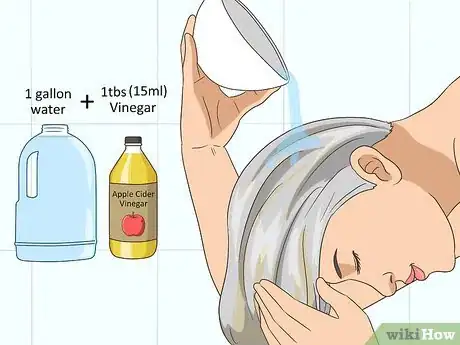

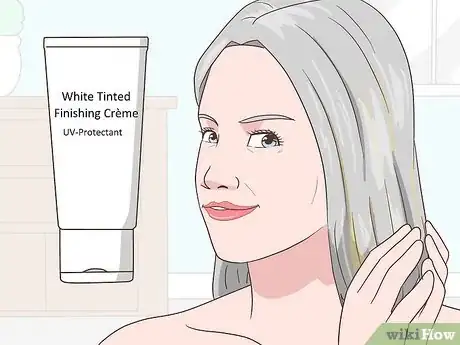
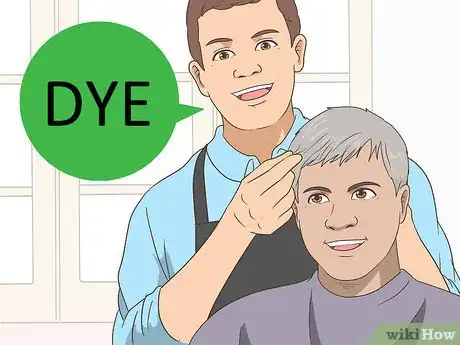
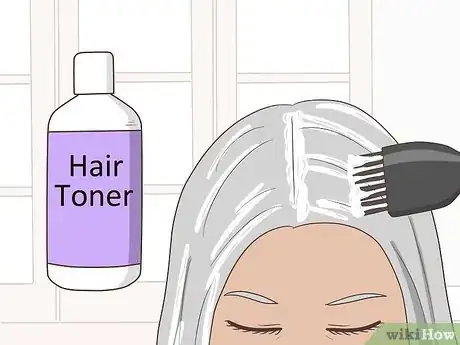

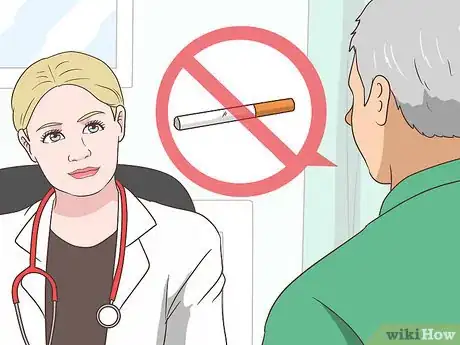
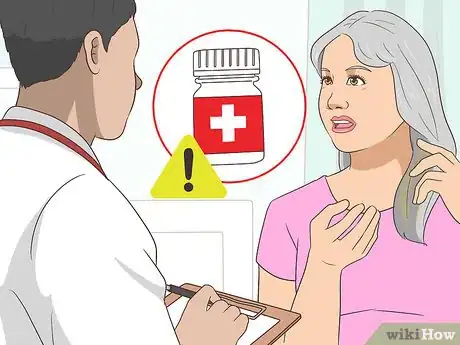
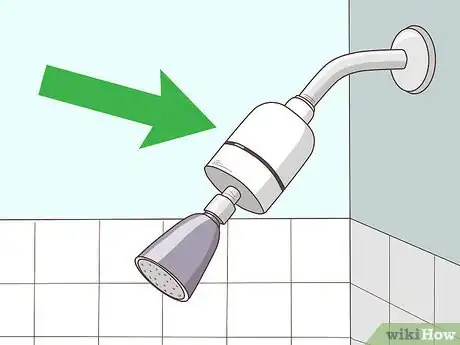
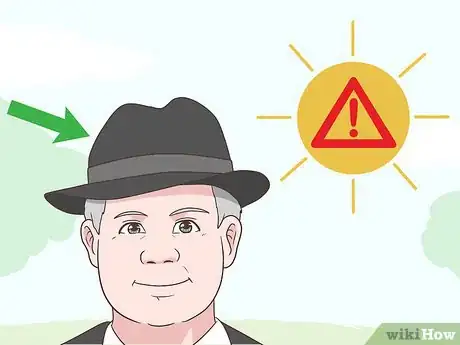

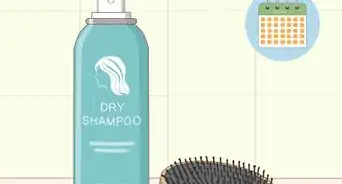
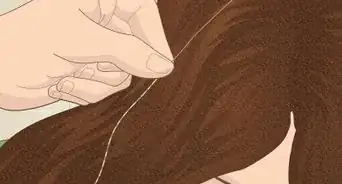
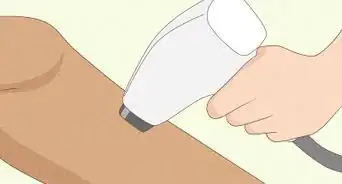
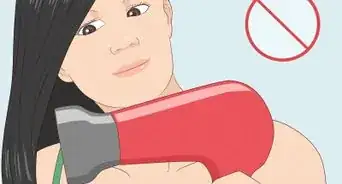
-Step-1-Version-8.webp)

